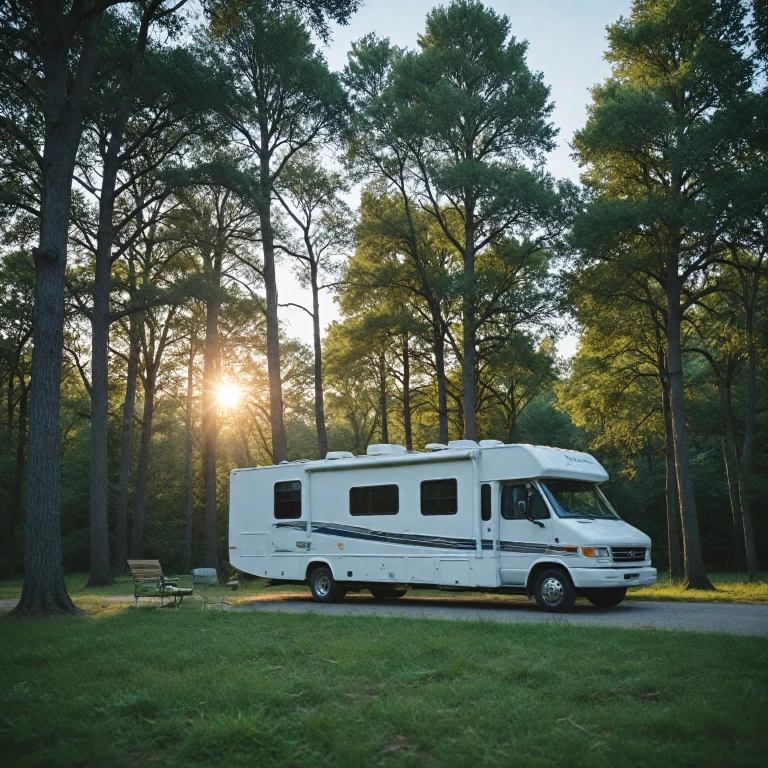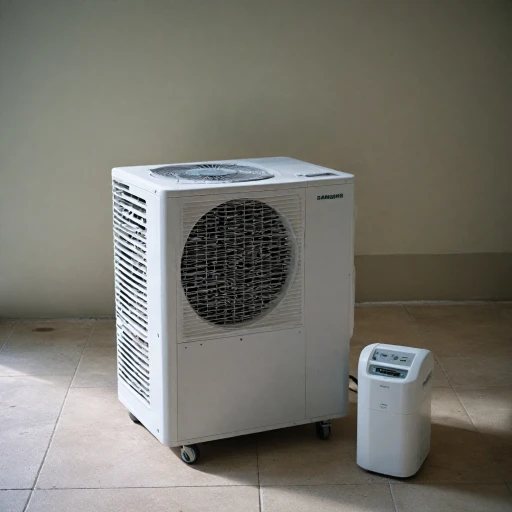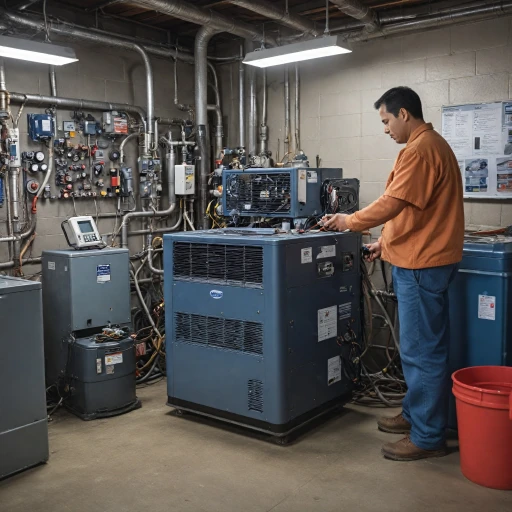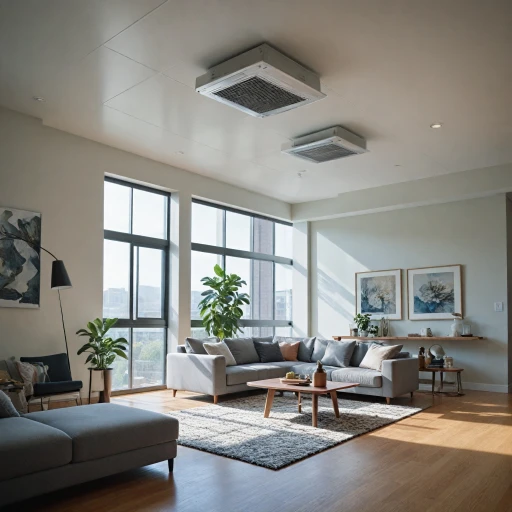
Understanding RV AC Systems
Introduction to RV Air Conditioning Systems
Choosing the right air conditioning system for your RV is crucial to ensure comfortable travels and adventures on the road. Understanding the types of systems available will help you make an informed decision based on your specific needs.Types of RV Air Conditioning Systems
RVs can be equipped with various types of air conditioners, each offering distinct advantages:- Rooftop Air Conditioners: Popular for their efficiency, these are installed on the roof of the RV, often used in units like Dometic or Coleman Mach. They can come in low profile designs to reduce wind resistance.
- Split Air Conditioning Units: Similar to residential systems, these have an internal and external unit, offering versatility and often used in multi-zone cooling setups.
- Ducted Systems: These systems distribute cool air evenly throughout the RV through ducts, providing consistent temperature control.
- Portable Units: Offering flexibility, these units can be moved easily and are especially useful in smaller spaces.
Comparing RV Air Conditioner Capacities
Choosing the right BTU (British Thermal Unit) capacity is essential. Units range from small 5,000 BTU models to larger 15,000 BTU versions. Be sure to evaluate the space you need to cool and any possible heat sources inside the RV that may require a higher cooling capacity.Additional Features to Consider
- Heat Pump Functionality: Some RV AC units include a heat pump, allowing for warming alongside cooling, ideal for variable weather conditions.
- Energy Efficiency: Pay attention to systems that offer energy-saving features, which can be beneficial in the long run, reducing power consumption and cost.
- Single Zone or Multi Zone Options: Single zone systems cool one area, while multi-zone units can maintain different temperatures in separate areas, offering personalized comfort.
Choosing the Right AC System for Your RV
Selecting the Optimal Air Conditioning Solution for Your Vehicle
The key to a comfortable RV journey lies in choosing an air conditioner unit that fits your needs and lifestyle. With an array of options available on the market, from ducted and rooftop to split air systems, it's essential to weigh the advantages and limitations of each.
- Rooftop Units: These are popular due to their ease of installation and ability to free up interior space. Brands like Coleman Mach and Dometic FreshJet offer models with various BTU outputs, catering to different cooling needs. While they provide efficient cooling, it is crucial to check the unit price and compare models to ensure that they meet your specific requirements in terms of power and heat pump capability.
- Split Air Systems: Ideal for multi-zone cooling, these systems are known for quiet operation and increased efficiency. They provide targeted cooling and heating via heat pumps, enhancing overall comfort. Consider the price regular versus price sale and unit price, along with energy consumption, to find a balance between upfront costs and long-term savings.
- Ducted Systems: These are excellent for more evenly distributed air throughout the RV. While typically at a higher regular price, they are worth the investment for the consistency in temperature control they offer. Prioritize systems that align with your expected travel environments—a unit with higher BTU might be more suited for hotter climates.
- Mini Splits: A perfect fit for more customized installations, allowing you to cool specific areas within your RV. They can be more expensive at first, but they offer energy efficiency advantages that could lower your utility costs over time. When available, stock compare options and sale price deals to optimize your purchase.
Before buying, evaluate your RV’s space, the typical travel heat and power demands, and your budget constraints. Explore options and gather extensive information to ensure you're making the most informed decision.
For further insights on enhancing your RV's temperature control capabilities, including integrating pipe fans for efficient air distribution, visit our dedicated blog.
Installation Tips for RV AC Systems
Proper Installation Ensures Optimal Cooling
When it comes to installing an air conditioning unit in your RV, several factors must be taken into account to ensure optimal cooling and energy efficiency. A carefully installed system can make all the difference in comfort levels during your travels.- Selecting the Right Location: Before mounting the unit, consider placement to maximize cooling. Rooftop air conditioners are common, providing efficient cooling across a single or multi-zone system. Low profile designs, like those offered by Dometic and Coleman Mach, are generally preferred for RVs to minimize resistance while driving.
- Ducted vs. Non-Ducted: Depending on your RV’s layout, choose between ducted and non-ducted systems. Ducted systems offer even cooling throughout the RV, while non-ducted systems are simpler and tend to be more cost-effective. Compare different systems to find the most suitable unit price within your budget.
- Power Requirements: Ensure your RV’s power supply meets the demands of the air conditioner unit. Many cooling systems, particularly those with heat pump functionalities, require specific BTU outputs to operate efficiently. For example, a high BTU unit can effectively cool larger spaces but demands more energy.
- Rooftop Installation Tips: When installing a rooftop unit, secure the air conditioner properly to prevent any damage from road vibrations. Additionally, ensure seals are tight to avoid water ingress. Check that the power connections have been properly set up to avoid any potential hazards.
- Regular Maintenance: Post-installation, regular maintenance such as cleaning filters and checking for leaks will ensure the unit runs efficiently. Staying on top of these can prevent costly repairs and maintain the unit’s integrity.
Maintenance and Troubleshooting
Essential Maintenance Practices for Optimal Performance
Regular maintenance of your RV's air conditioning system ensures that it operates efficiently, providing consistent cooling and enhancing your comfort on the road. Whether you have a rooftop air conditioner, a ducted system, or a mini split unit, each type has its own set of maintenance requirements. Here are some key tips to keep your AC running smoothly:
- Regular Cleaning: Dirt and debris can accumulate in the air conditioner unit, obstructing airflow and reducing efficiency. Clean or replace filters regularly, and make sure to remove any debris from the condenser and evaporator coils to maintain optimal cooling.
- Check for Leaks: Refrigerant leaks can significantly impact the cooling performance of your unit. It's crucial to inspect for leaks around the connections and fittings. If you suspect a leak, consult a professional for repairs.
- Monitor the Thermostat: Ensure that your thermostat is functioning correctly and is calibrated to maintain the desired temperature. In case of discrepancies, a recalibration or replacement may be necessary to ensure proper temperature control.
- Inspect Electrical Connections: Loose or damaged electrical connections can result in inefficiencies or dangerous overheating. Regularly check the wiring and connections for any wear and tear, ensuring they are secure and intact.
- Heat Pump Maintenance: If your RV air conditioner has a heat pump option, verify that it transitions smoothly between heating and cooling modes. Keeping both functions in check will allow your unit to switch efficiently as per your needs.
RVs often use units like the Dometic FreshJet or Coleman Mach, known for their power and performance. Compare systems and their maintenance needs to maximize longevity and cooling efficiency. Investing time in regular upkeep helps prevent breakdowns and potentially costly repairs, keeping your RV cool at the lowest price. Having this in the back of your mind will not only improve your air conditioning unit's longevity but also optimize your unit price over time.
Energy Efficiency and Cost Considerations
Balancing Energy Use and Costs
When it comes to air conditioners for RVs, energy efficiency and cost considerations are crucial aspects that deserve attention. To ensure you get the best out of your system while keeping expenses in check, it's important to keep a few key factors in mind:- Power Consumption: Most RV air conditioners, whether a rooftop air or ducted system, operate at different power levels. The BTU rating often indicates power capacity. Systems with higher BTU ratings cool faster and more effectively but tend to consume more energy. Opting for a unit with a BTU rating fit for your RV size can help in managing energy consumption.
- Heat Pump Advantages: Heat pump models provide both heating and cooling using the same unit, which can lead to cost savings in the long term. These units might have a higher price, but they offer efficiency and versatility that can justify the upfront expense.
- Energy Efficiency Innovations: Recently, manufacturers like Dometic and Coleman Mach have introduced technologies aimed at enhancing energy efficiency, such as the Dometic Freshjet or multi-zone cooling systems. These innovations often come with a price tag, but many users find the investment worthwhile for reduced regular prices in energy bills over time.
- Unit Choices: From single zone systems to complex mini split air conditioners, the variety of choices can influence both the initial unit price and running costs. Mini split systems, in particular, offer precise control and are a great option for those looking to optimize cooling efficiency.
- Opt for Low Profile Units: Low profile rooftop air units not only streamline your RV's appearance but often contribute to less drag and thus better mileage, indirectly saving on fuel and energy costs.












